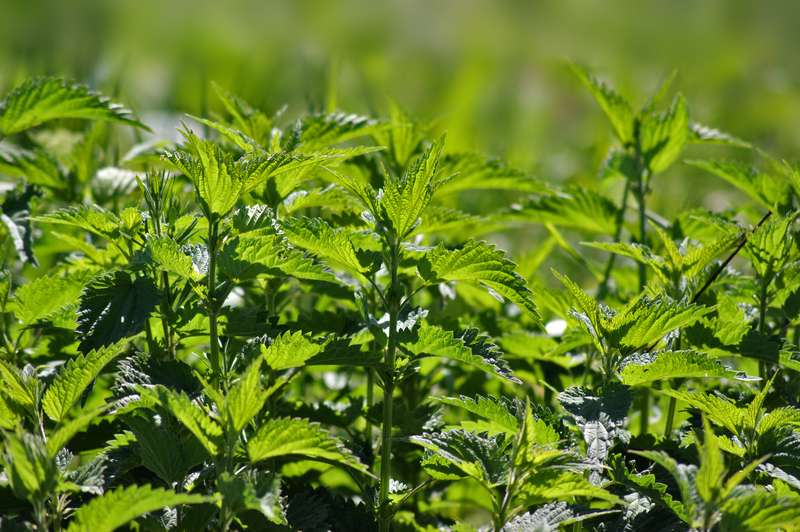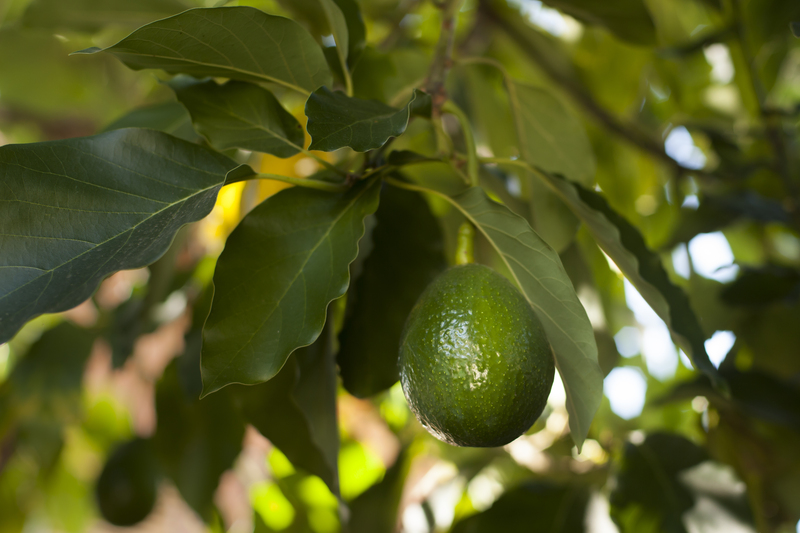Kickstart Your Garden with These 9 Essential Tips
Posted on 13/08/2025
Kickstart Your Garden with These 9 Essential Tips
Are you dreaming of a lush, thriving garden but not sure where to begin? Whether you're a seasoned green thumb or just starting your gardening adventure, implementing the right strategies from the outset can make all the difference. Dive into our comprehensive guide packed with essential gardening tips so you can cultivate a beautiful, productive outdoor oasis. Let's discover how to kickstart your garden and enjoy vibrant blooms and bountiful harvests all season long!
Why Start a Garden? Benefits of Gardening for Beginners
From improving mental health to boosting your home's curb appeal, gardening offers countless benefits. Tending to plants doesn't just yield fresh produce and stunning flowers; it fosters relaxation, creativity, and a strong connection to nature. With a well-planned garden, you'll enjoy tasty vegetables, colorful flowers, and a tranquil retreat right outside your door.
- Physical Exercise: Digging, planting, and weeding keep you active.
- Mental Wellness: Gardening reduces stress and promotes mindfulness.
- Environmental Impact: Growing your own plants supports pollinators and reduces carbon footprint.
- Fresh Produce: Enjoy organic fruits, vegetables, and herbs grown by your own hands.
- Beautification: A gorgeous garden enhances your property's value and appeal.

1. Assess Your Garden Site
Before planting, it's crucial to analyze your garden area. Where you locate your garden dramatically impacts plant growth.
- Sunlight Exposure: Most fruits and vegetables need at least 6-8 hours of full sun daily. Observe your yard at different times to find the sunniest spot.
- Soil Drainage: Avoid areas where water collects after rain. Good drainage is key to healthy roots.
- Proximity to Water: Choose a convenient location so watering is easy and consistent.
- Accessibility: Make sure your garden is easy to reach for planting, watering, and harvesting.
2. Understand Your Soil
Successful gardening starts from the ground up--literally! Soil health is the foundation for thriving plants. To kickstart your garden, invest time in discovering your soil's composition and quality.
How to Test Your Soil
- Purchase a simple soil test kit online or at a garden center.
- Check for pH level. Most plants flourish in slightly acidic to neutral soil (pH 6-7).
- Assess soil texture using the "squeeze test": sandy (crumbles), clay (sticks), or loam (ideal).
Improving Soil Fertility
- Add organic matter like compost, manure, or leaf mold to enrich the soil.
- Consider planting cover crops during the off-season to enhance nutrients.
- For clay soils, mix in sand and compost to boost drainage.
- If soil is sandy, add organic matter to retain more moisture.
3. Choose the Right Plants
The best way to start a garden successfully is to select plants suited to your climate and soil type. Disappointment often comes when plants are incompatible with their surroundings.
- Zone Hardiness: Use the USDA hardiness map (or your country's equivalent) to find your zone and choose plants accordingly.
- Sun vs. Shade: Identify which areas of your garden receive the most sun and choose light-loving or shade-tolerant plants as appropriate.
- Local Varieties: Visit your neighborhood nursery. Local varieties are well-adapted and more resilient in your area.
- Purpose: Decide if you want an ornamental, vegetable, herb, or mixed garden.
Kickstart Your Vegetable Garden
- Top picks: Tomatoes, peppers, beans, carrots, lettuce, cucumbers.
- Easy herbs: Basil, parsley, mint, oregano, rosemary.
- Perennials for less maintenance: Chives, rhubarb, asparagus.
4. Plan & Layout Your Garden Space
A well-thought-out layout ensures that your garden thrives and maintenance stays manageable. Proper spacing prevents overcrowding and minimizes disease buildup.
Tips for Garden Planning
- Draw a sketch of your garden space, marking sunny and shady areas.
- Group plants with similar light and water needs together.
- Leave walkways between rows for easy access.
- Use raised beds or containers if space or soil quality is limited.
- Rotate crops each year to avoid soil depletion and reduce pests.
5. Practice Smart Planting Techniques
Knowing when and how to plant your seeds or seedlings is vital to their success. Proper planting techniques give your garden the jumpstart it needs.
Best Practices for Planting
- Follow seed packet instructions or nursery tag guidance for planting depth and spacing.
- Harden off seedlings by gradually exposing them to outdoor conditions before transplanting.
- Water thoroughly after planting to settle soil around roots.
- Mulch around plants to retain moisture and suppress weeds.
6. Water Wisely
Proper watering is one of the most essential gardening tips for both beginners and experienced gardeners. Overwatering and underwatering are common pitfalls, so learning best practices is crucial.
- Water deeply and less frequently to encourage strong root development.
- Morning is the best time to water, reducing evaporation and disease risk.
- Drip irrigation or soaker hoses deliver water directly to roots and conserve moisture.
- Check soil moisture by feeling it two inches below the surface before watering.
- Mulch locks in moisture, saving time and water.
7. Feed Your Plants
Great gardens start with proper plant nutrition. Fertilizers and soil amendments provide vital nutrients for robust growth and yield.
- Apply compost or a balanced fertilizer as directed for your plant type.
- Don't over-fertilize--too much can damage roots and plants.
- Use slow-release organic fertilizers for prolonged nourishment.
- During the growing season, side-dress with compost to encourage ongoing growth.
8. Monitor for Pests and Diseases
Protecting your garden from pests and diseases is crucial for long-term success. Early detection and organic control methods can save your plants and reduce chemical use.
- Inspect plants weekly for signs of damage or unusual spots.
- Encourage beneficial insects like ladybugs, lacewings, and pollinators.
- Remove damaged or infected leaves to prevent spread.
- Try natural remedies such as neem oil, insecticidal soap, or homemade garlic spray.
- Rotate crops and practice good garden hygiene to minimize issues.
9. Keep Learning and Growing
No garden is ever truly finished. The best gardeners continue to learn, observe, and experiment. Embrace the process and enjoy each phase of your gardening journey.
Ways to Grow Your Gardening Knowledge
- Read books, blogs, and reputable gardening websites like RHS or The Old Farmer's Almanac.
- Join a local gardening club or online forums to share experiences.
- Attend workshops or virtual webinars for hands-on learning.
- Keep a garden journal to track planting dates, varieties, and results.
Bonus: Essential Tools to Jumpstart Your Garden
Equipping yourself with the right gardening tools can make every task more enjoyable and effective.
- Trowel: For digging and transplanting small plants.
- Gloves: Protect your hands from thorns and soil-borne diseases.
- Pruning Shears: Essential for shaping plants and removing dead growth.
- Watering Can or Hose: Choose based on your garden size.
- Garden Fork: Loosens soil and incorporates compost.
- Rake: For clearing debris and leveling soil.
- Wheelbarrow: Makes moving soil, compost, or plants much easier.

Common Garden Challenges and How to Overcome Them
- Weeds: Mulch and hand-weeding are effective. Stay vigilant to prevent weeds from overtaking your garden.
- Drought: Use water-conserving techniques, including drip irrigation and mulching. Select drought-resistant plants if water is scarce.
- Pests: Physical barriers, beneficial insects, and regular inspections are key to integrated pest management.
- Lack of Time: Start small, use raised beds or containers, and opt for low-maintenance perennials.
Conclusion: Start Growing Today!
Turning your garden dreams into reality is all about starting smart and staying persistent. These nine essential gardening tips will help you kickstart your garden and keep it thriving. Remember to pay attention to your soil, water wisely, and choose the right plants for your climate. Don't be afraid to experiment or make mistakes - gardening should be a source of joy and discovery.
No matter your space or experience, every gardener starts with that first plant. So grab your gloves, gather your seeds, and get ready to watch your outdoor haven flourish! Happy gardening!



